
kscarbel
-
Posts
1,114 -
Joined
-
Last visited
-
Days Won
8
Content Type
Profiles
Forums
Gallery
Events
Blogs
BMT Wiki
Collections
Store
Posts posted by kscarbel
-
-
Great pictures, from when Mack Trucks was an American icon. Really good to see that LRVSW.
I see a B-model ladder truck (fire apparatus) in the middle. Given the show's location and the truck's spec, it must have been for the Chicago Fire Dept.
And over to the right is a famous piece, the Mack "Bus of Tomorrow" !
-
The 15.2 liter MAN R6 inline-six was introduced last year as a replacement for the 16.2 liter D28 V-8 for Euro-6 for ratings over 500hp. However, MAN is now stating the 16.2 liter D2868 V-8 is available in Euro-6 rated from 360 to 540hp.
This is a mistake on the website of MAN,euro 6 are only inline 6. 10,5L 12,4 and 15,2l
The now cancelled 15.2 liter Maxxforce 15 was derived from the Caterpillar C15. MAN claims their 15.2 liter R6 is "MAN designed and built" (not to be confused with the 730-800hp 12.8 liter MAN R6 marine engine). The 15.2 liter coincidence is interesting.
What i heard is that the cilinderblock is Cat (rumors).
As for the Mack connection, one can certainly say the 15.6 liter Scania V-8 has a family history connection to the Mack E9 V-8.
It was the 14L not the 15.6L
You say the MAN website is mistaken, but I was told differently at IAA Hannover. In any event, Scania's 730hp Euro-6 V-8 certainly impresses. Drive one when you get a chance.
As for the Mack V-8 / Scania V-8 relationship, I realize you're talking about the early V-8s on both sides. But even the displacements of the later V-8s interestingly coincide. When I have time, I'll outline that for you.
-
The Financial Times / February 6, 2013
Volvo profits hit as truck orders slump
Volvo Group warned that the first quarter of this year would be difficult after it reported a drop in operating profits of 84% in the last 3 months of 2012 as demand for trucks and construction equipment slumped.
CEO Olof Persson said he expected economic growth globally to “gain momentum” during 2013 but that profitability in the first quarter would be weighed down by low production and high spending on new products and research and development.
“The first quarter of 2013 will also be difficult as a result of the low order intake in many markets during the fourth quarter of 2012,” he said.
Volvo has struggled to maintain profitability in the cyclical truck and construction machinery sectors.
Volvo Group operating profit in the fourth quarter fell from US$1.09 billion (SKr6.96bn) a year earlier to US$180 million (SKr1.12bn) while sales dropped 17% to US$11.3 billion (SKr72bn).
Demand in Volvo’s truck division was lower worldwide, with deliveries down 17% in South America and Asia, and 23% in North America. Europe fell 10%.
Volvo said forecasts for this year were difficult to make but stuck to its earlier estimate of unchanged sales in Europe and North America. Order intake in the quarter fell 10% but that was better than analysts had predicted, and also an improvement on the previous three months, helped by stronger demand from Brazil.
Volvo has been cutting production and stock levels aggressively to avoid being caught as it was in the 2008-09 financial crisis when net orders went negative for several months.
-
As i suspected. The factual comments of a new volvo cab for mack are based on expectations and market assumptions. I will simply believe it when i see it, at which point please call me wrong.
The upcoming replacement cab is a fact that has been shared by Volvo with the dealers, easing their concerns as the aging CH cab becomes less competitive over time (showing them "a light is at the end of the tunnel"), and also mentally preparing them for a Mack-branded truck that uses a Volvo global market cab derivative.
-
It would have a Mack EA7-470 E-Tech engine.
I suggest you contact your local Mack dealer's service manager. After telling him the history, mileage and condition of this particular truck, he should be able to give you some guidance.
-
Svin, sorry if I wasn't clear. I said "Scania also updated their popular 15.6/16.4 liter DC16 V-8 (520-730hp) to Euro-6" because at Euro-5, the 500, 560 and 620 were 15.6 liters while the 730 showcased the then-new 16.4 liter block. In Euro-6 spec, the Scania DC16 V-8 in 520, 580 and 730 horsepower indeed all share the new 16.4 liter displacement.
The 15.2 liter MAN R6 inline-six was introduced last year as a replacement for the 16.2 liter D28 V-8 for Euro-6 for ratings over 500hp. However, MAN is now stating the 16.2 liter D2868 V-8 is available in Euro-6 rated from 360 to 540hp.
The now cancelled 15.2 liter Maxxforce 15 was derived from the Caterpillar C15. MAN claims their 15.2 liter R6 is "MAN designed and built" (not to be confused with the 730-800hp 12.8 liter MAN R6 marine engine). The 15.2 liter coincidence is interesting.
As for the Mack connection, one can certainly say the 15.6 liter Scania V-8 has a family history connection to the Mack E9 V-8. -
Just curious on the answer to the above. I'm just not seeing it.
Also, the comments on updating the E9 seem off base using simple business logic. When you are selling barely 1-200 of them a year, spending many millions on updating it would be a big money loser, or a massive payback period.
For an idea of the launch date and artist's rendering of the upcoming cab, I suggest you ask Volvo. However, you can view the new Volvo FH (introduced Sept. 2012) and get an idea of the styling direction.
About the upcoming cab, there are two points worth mentioning.
The Volvo-owned tooling for the CH cab at Volvo's cab manufacturer CVG (Commercial Vehicle Group) is in rough shape after 26 years (projected service life was probably 30 years). Volvo hasn't invested any money other than to keep it going day-to-day, because the new cab is on the horizon and the close-to-worn-out CH tooling will suffice for service replacement parts.
Another reason for the new global cab has more to do with the evolving global market requirement, where there's an expectation for "something new" every 3-4 years (not unlike the car industry).
For example, we recently saw most of the European truckmakers basically reintroduce their vocational model ranges, creating a customer perception of a more intensive purpose-designed truck for the construction industry.
Examples include the Volvo FMX, Iveco Trakker Hi-Land, Mercedes-Benz Arocs and Scania off-road construction series. They all have new tough-looking cab aesthetics, complimented by meaningful drivetrain and chassis refinements.
The aging Volvo FM and Renault Premium are likely benefactors of the upcoming global cab. The new DAF XF and Iveco Stralis HI-WAY put additional pressure on Volvo to keep up with the pace.
The new Volvo FH, with its "like it or hate it" front fascia was targeted at the German market, where Volvo hopes to take market share away from Mercedes-Benz and MAN (good luck with that). The extremely tired Renault Magnum will finally be replaced with a derivative of the new Volvo FH.
About the feasibility of E9 V-8 production. Those with vision and sales marketing expertise can understand that the V-8 was a halo product for Mack Trucks (not unlike the Corvette since 1953 for Chevrolet). Does MAN and Scania make money on their V-8 production, much lower in volume than their 11 and 13 liter engines? While they don't make a profit on V-8 production alone, they DO make a profit on overall engine production. And the V-8 gives them a unique halo product. The customer image of high horsepower has always been the V-8, never an inline-6. So, the V-8 is a nice marketing item to have in one's portfolio. We know it was they way for Mack Trucks, and as for MAN and Scania, just ask them while observing their happy grin (Scania truck operators are thrilled with their 730hp V-8s).
I can't agree with your suggestion that Volvo would have to have spent millions on the V-8 specifically. The "many millions" spent on developing the technology to meet EPA2010 (and Euro-6) emissions standards is utilized over the entire engine range. Engine model specific expenses are significantly less.
-
Our government saw fit to save Chrysler twice, and GM, on the grounds that these carmakers were too important to America to fail. It was an arguable point. Our government should have taken that thought process one step further and orchestrated some form of "assistance", to prevent Mack from falling into foreign ownership.
Yes, the E6 4VH with a mechanical AMBAC (American Bosch) pump was a superb and reliable engine. The E6 went metric with the E7. Then Mack joined all the other U.S. and global truck engine makers in adding EGR to meet the next round of higher emissions requirements. The result was average at best. Yes, the Mack engine sunk in stature at that moment. But is it fair to compare the Volvo engine of today to that Mack EGR engine of yesterday? Of course not. And let's be fair and ask ourselves, how many truck and/or engine manufacturers have never missed the mark for a period of time. I can't think of any.
The EGR E7 wasn't the result of a cash shortage. The entire industry was going the EGR route to meet the emissions requirements of that time, and this widely accepted technology solution worked for most.
We can't really mention the Mack 855 cu.in. (14L) "Big 6" because that V-8-based engine concept was way back in 1978-1982.
There was nothing at all wrong with Mack continuing to offer a 728 cu.in. (11.93 liter) engine. The most popular engine sizes today, both in the U.S. and worldwide, are 11 to 13 liters. One could argue the displacement increase from 672 cu.in. (E6) to 728 cu.in. (E7), that is 11.01 liters to 11.93 liters, essentially from 11 to 12 liters, was a logical progression. I certainly think so.
While 11, 13 and 15/16 liters have now become industry standard engine sizes, that future development trend remained an unknown years ago. Again, I can't think of a U.S. or global truck maker that has never stumbled, (i.e. mistakenly forecasted future trends). I would like to have seen Mack continue building an 11-liter engine (672 cu.in.), and also introduce a 13 engine (around 793-795 cu.in.).
Mack could absolutely have developed an EPA2010 compliant E9 V-8 with a combination of SCR and EGR. But Volvo cancelled the V-8 program.
If Mack still offered a V-8, the company would be the envy of the competition, having the U.S. V-8 market all to themselves.And certainly, Mack customer demand for a pedigreed V-8 powerplant both in North America, Australia, New Zealand and other global markets would remain favorable.
For Euro-6 (essentially EPA2010), Benz did cancel their OM502 V-8 in favor of the new OM473 (DD16) inline-6. However, MAN successfully upgraded their 16.2 liter D2868 V-8 to Euro-6 (360-540hp), and Scania also updated their popular 15.6/16.4 liter DC16 V-8 (520-730hp) to Euro-6 spec (a V-8 which has mysterious and interesting connections to the Mack V-8).
Given Mack's long-time relationship with Scania, dating back to 1950, Mack could have begun offering a Scania engine again in the form of the Scania DC16 V-8 to meet the high horsepower customer requirement, while manufacturing its own 11 and 13 liter engines for the high volume segments (another Mack-Scania win-win business arrangement).
In 1925, America had over 300 truckmakers. At the time Mack Trucks was absorbed into Volvo, America had but three major truckmakers - Mack, International and Paccar (Freightliner, Ford and Canada's Western Star had been absorbed by Germany's Daimler).
Mack should have received government support, and in turn a review of the competence of Mack management (rightfully so to the taxpayer, as Chrysler and GM were subjected to). But make no mistake about it, our government should never have allowed another foreign entity to acquire another one of our few remaining truckmakers.
Now as a result, the majority of heavy trucks on America's roads today are produced by foreign companies (from Germany and Sweden). If the United States was a small country with a minimal industrial base, it would be understandable for us to have few if any domestic truckmakers. But, we are the United States of America, a vast country and global pillar. Our ability to carry the torch and lead our country as well as the free world depends on the health of our industrial base and our truck industry.
It was in the best interest of the United States to "keep Mack Trucks American". But let's not forget the dirty pool that Volvo likes to play. Volvo met with Marc Gustafson, Mack’s vice president of sales and marketing from 1992, and convinced him into being nothing less than a traitor for the Volvo cause. Gustafson plotted with the ruthless Swedes at Volvo to conspire against Mack (the Swedes later double-crossed him – traitors usually get what they deserve in the end).
Gustafson abruptly left Mack in 1996 to become CEO of Volvo Trucks of North America. He betrayed Mack and used his privileged insider knowledge against Mack Trucks to help orchestrate Volvo’s takeover. Unlike the thousands of career Mack veterans across America, Gustafson only cared about his own personal advancement. He was no team player.
Note the time period, 1996. This is when Mack lost momentum and direction. At Volvo, Gustafson convinced Volvo Group that with his insider knowledge, he could deliver Mack Trucks into Volvo’s hands.
Renault-appointed Mack President Pierre Jocou responded quickly and took a hard stand against Gustafson’s defection (see news article below). But Volvo then used its relationship with Renault (the result of their merger negotiations) to ease the legal battle against Gustafson. Volvo succeeded in replacing the pro-Mack President Pierre Jocou with the pro-Volvo takeover Mack President Michel Gigou.
This is why Pierre Jocou's tenure as Mack president, which began in March 1995, ended prematurely in November 1996. From December 1996 thru July 2001, Gigou was merely minding store while the Volvo takeover of “the greatest name in trucks” was being negotiated behind closed European doors.
Ironically, after Gustafson used his 4 years at Mack to stab the company in the back, he only lasted 4 years as CEO at Volvo Trucks of North America. And then just one year heading Freightliner subsidiary American LaFrance. Perhaps his inability to be a trustworthy long-term team player caught up with him. If he’d been a 100% committed Mack man in the same way as Zenon C.R. Hansen, rather than a callous individual willing to stab Mack in the back for his Volvo masters, Mack Trucks might very well still be operating today, as they had been under Renault with generous independence.
_____________________________________________________________
Mack Trucks Sues Former Executive, Says Marc Gustafson Took Company Secrets With Him To His New Job.
October 01, 1996 | by ELLIOT GROSSMAN, The Morning Call
Mack Trucks Inc. has sued the new president of rival truck manufacturer, Volvo GM Heavy Truck Corp., accusing him of taking company secrets when he left Mack two weeks ago.
And Mack has won at least a partial victory in Round 1 of the legal battle involving Marc Gustafson, a former Mack executive vice president.
Chief Judge Edward Cahn of the U.S. District Court in Allentown issued a temporary restraining order Friday, forbidding Gustafson from participating in any Volvo sales and marketing activities or from disclosing any Mack sales and marketing information at Volvo.
But Mack wanted Gustafson blocked from working for Volvo -- or any Mack competitors -- for at least a year. Mack also asked for damages to be awarded at a trial.
At a hearing next Tuesday, Cahn will more deeply delve into the case so he can issue a permanent order.
Gustafson served as Mack's executive vice president for sales and marketing for four years until he resigned Sept. 19, effective that day. He then went to work at Volvo GM Heavy Truck headquarters in Greensboro, N.C.
Mack sued him last week in Lehigh County Court. But he asked that the case be heard in federal court, and Mack did not object.
Mack claims that Gustafson is violating his contract with Mack. In the contract, according to Mack, Gustafson promised to not disclose any confidential Mack information outside Mack.
"It would be impossible for him to ignore his knowledge of Mack's business plans as he considers Volvo's business plans and its competitive strategies," according to Mack's lawsuit.
For example, the suit claims, Gustafson has knowledge of Mack secrets about its costs and pricing structures. This information, which Mack uses when bidding on large orders of trucks, is known only to select individuals at Mack.
Since Mack and Volvo often compete for such orders, Volvo will have an unfair advantage, according to Mack.
Also, Gustafson's knowledge about products being developed by Mack will enable Volvo to take steps to respond to Mack's new products before the products are announced publicly, Mack claims.
Before filing the suit, Mack President Pierre Jocou sent a letter to Volvo's chairman, asking him to not employ Gustafson, at least until the two sides resolve Mack's concerns. -
Does anyone else get tired of the whining and boo-hooing about Volvo/Mack? It might not be the greatest deal that could have been dealt but here were are. Mack is still selling trucks and our dealership sold more new Macks last year than in a long time. We dont all live in the 70's and watch "B.J. and the Bear". However if your gonna bitch this is a good place for it.
There's no whining here, just constructive dialogue amongst some Americans that are concerned about our country, whose health depends on the strength of our critical business sectors including the American truck industry.
I regret the derision I sense in your post. However you have the freedom to pass over my posts, and any others that don't interest you.
Mack Trucks is not still selling Mack trucks. Volvo Trucks North America is selling Mack-branded trucks which have a Volvo content (by component value) of 50 to 80 percent. And when the US version of the new Volvo global cab arrives, that figure will rise to 70-100 percent. But of course as a dealer, you already know all that.
Speaking of dealers, Volvo Trucks North America is trying to get all the dealers to sign new contracts that would allow Volvo to cancel the dealer in 60 days. Needless to say, there haven't been any takers. The new dealer agreement speaks volumes about how the Swedes do business (and you're sticking up for them?). Most Mack dealers are currently operating under the fair-minded contracts they had signed with Mack Trucks Incorporated (Mack Trucks valued its dealers). Because of dealer protection laws (and thank goodness we have them), Volvo can't force the dealers to rip up their grandfathered Mack contracts and sign the new outrageous Volvo Trucks North America dealer contract.
-
 2
2
-
-
Not sure if this is mentioned in Volvo US history but they did make an attempt to enter the US market in the early 60's with their prototype "Tip Top" but it was no match for the market.... similar looks to the Crackerbox?? only 240hp...
They quickly dropped any aspirations and concentrated on the EU and UK markets and the Tip Top evolved into the very successful F88, the lineage still seen in the current F16.
BC Mack
In every case from the L4951 Titan Tiptop (pictured) to the conventional Titan to the F86US and the N10US, Volvo consistently demonstrated that they didn't understand the US market. The character flaw at Volvo is they don't like to take advice.
-
After building heavy trucks for 40 years, I was disappointed to see Ford sell its heavy truck division to Freightliner in 1997.
Freightliner (Daimler) purchased Ford's technology, tooling, and assembly equipment for the all-new "Louisville" and "AeroMax" models (known as the HN80 series) for an estimated US$200 million. Daimler picked up the enormous investment Ford had in the HN80 program at a bargain price (Ford is said to have invested US$500 million).
Combining Freightliner and Ford’s heavy truck unit gave Daimler nearly 40% of the US truck market.
The real irony here is from the HN80’s introduction in 1996 until production ended in Louisville in December 1997, Ford saw strong heavy truck sales.
After Ford agreed to sell its truck unit to Freightliner, though being a lame duck, Ford's heavy truck unit with the cutting edge new HN80 showed it still packed some punch. Although Ford had a modest 9% market share in 1996, the HN80 allowed Ford dealers to rally in the first quarter of 1997.
Ford sold 3,777 Class 8 trucks in the first 3 months of 1997, up 8.2% over the first quarter a year before. Ford sales rose 50.2 percent in March 1997, compared to the same month a year before.
Overall, 1997 first quarter Class 8 sales of 39,102 trucks were off 5.7% from the previous year. But Ford's 1997 first quarter Class 8 market share rose to 9.7%, placing Ford ahead of Volvo GM Heavy Truck Corp. which held a 9.1%. Peterbilt was the only other truckmaker that saw first-quarter sales rise.
By the way, all the Ford Transit Connect vans being sold here now (the smaller Transit van) are imported from Ford Otosan (they’re imported with rear seats to evade the high truck import tax, then the seats are removed and shipped back to Turkey)
The “Ecotorq” engine range in the Ford Otosan Cargo consists of four engines. They’ve been producing a Ford 7.3 liter 260hp powerplant (24-valve in-line 6-cylinder – not a Powerstroke) since 2003 (called the 7300 Series from 2003, and 7400 Series from 2008 with the introduction of a CGI cylinder block and head.).
The Ford Otosan 9.0 liter 9400 Series Ecotorq is a mysterious engine. Though claimed to be a proprietary design, it has the exact 8.974 liter displacement as the Cummins ISL. The Ecotorq's bore/stroke at 115x144 is nearly the same as the ISL at 114x144.5. But while the ISL has replaceable wet liners, the Ecotorq has a parent bore (sleeveless) design like an ISB and a compacted graphite iron (CGI) cylinder block and head. This engine has been offered from 2008 rated at 320, 360 and 380 horsepower (380hp is asking too much of a 9-liter engine aside from fire and emergency vehicle applications). It appears Ford designed this engine in cooperation with Cummins based on the ISL, but taking advantage of CGI technology. Recalling Ford Truck in the U.S. and Europe, and Ford Truck Brazil today, Cummins has a long-time relationship with Ford. The arrangement may be no different than the Cummins V6 (VAL) and V8 (VALE) engines that were rebadged as Chrysler engines for European market Dodge heavy trucks.
The engine sizes have Bosch electronically controlled common rail. With SCR, they can reach Euro 5 (roughly EPA2007).
Ford Brazil and Ford Otosan (Turkey) seemed to be following different paths for many years. Now there’s an effort within Ford for the two units to work more closely together. Ford Otosan has been pushing Ford corporate for funding, and convinced Bill Ford in 2011 to allow them to take the lead in Ford commercial truck production and become responsible for global sales (Ford Otosan wants to grow with more int’l sales). Now, Ford Otosan is responsible for developing models for all world markets. They’ll share R&D efforts with Ford Brazil but Ford Otosan is in charge.
All the talk about Ford Otosan’s “all new” Cargo left me with high expectations. However it’s just a tweaked version of the same old cab, and the front fascia is not very appealing. The front end appearance of Brazil’s current Cargo is also strange.
The new-for-2012 premium 1846T 4x2 tractor gets a 10.3 liter VGT-equipped 460hp engine with 1,549 ft-lb. of torque. A 322hp engine brake can be paired with a ZF retarder attached to a ZF 16S2220 manual overdrive or 12AS2130 direct drive AMT. Ford’s not saying but this is the Iveco “Cursor 10”. It’s a good engine if you’re not overloading.
It has a 7100kg (15,653lb) front axle and Meritor 11,500kg (25,353lb) rear axle, and a 40,000 (88,185lb) GCW.
To me, without a modern full-width 2300mm cab, the Cargo still isn’t ready for Europe and most global markets.Here are a few pictures to show others what we're discussing. Thru 2012 at least, the grilles differed between the Ford Otosan Cargos (Turkey) and those produced at Ford Brazil.
-
ive said this 1000 times . mack is better now than it was 10 yrs ago hands down. the mp series engines are the best engines avasilable today. cummins is having tons of problems and so is volvo and international. lets see who would rather have a ac 460p mack engine or a mp8 505 hp. its not even close. its been 12 yrs since volvo took over mack . gmc white and autocar all were eaten by volvo. mack still remains. volvo even lets mack have the most powerful trucks .
My friend, let's be clear once and for all. Mack Trucks no longer exists. The legendary company was acquired by Volvo Group on January 2, 2001. The brand "Mack" is marketed by Volvo Trucks North America. Sadly, Mack is little more than a nameplate now.
It's no different than the Cub Cadet product by MTD sold at Home Depot. It's not the Cub Cadet product produced by International Harvester. MTD is marketing a once respected nameplate for as long as it works.
In our great country, in which trucking, industrial might and design innovation figure so prominently in our history, it is unbelievable that the majority of trucks on the roads of America today are produced by the Germans and Swedes.
It is utterly humiliating that America no longer has the ability to compete and lead in our own domestic truck market.
We could save our carmakers despite their self-inflicted woes, but we couldn't save the most prominent and respected truckmaker in American history?
If you feel Volvo engines (rebadged as Mack MPs) are the best available today, that's great. I'm glad you're getting good service from them. I agree with you that Volvo engines are solid performers. DAF, Iveco, MAN and Scania engines are as well.
But arguably the most advanced and impressive truck engines right now are the Mercedes-Benz OM470 (DD11), OM471 (DD13), OM472 (DD15) and OM473 (DD16).
I think Cummins gets a bad rap whenever they have an issue, simply because Cummins has such a broad market share. Cummins remains a respected American engine manufacturer with an incredibly diverse product range.
Navistar's Maxxforce 11 (MAN D20) and Maxxforce 13 (MAN D26) should perform superbly now with SCR at EPA2010. MAN used Massive EGR to meet Euro-5 without any issues, but never intended these engines to run Massive EGR at Euro-6 (the near equivalent of EPA2010). MAN switched to SCR to meet Euro-6. Navistar was basically trying to do the impossible.
-
Maybe I'm a glass half full guy, but I think Volvo really does know and respect Mack to a certain extent. I mean here we are some 12 years into this and Mack is still here. A guy can still spec a "Mack" truck that has a Mack hood, cab, interior, transmission, axles, and a motor tuned and programmed by Mack engineers. No one in this global economy can go it alone anymore and this marriage has gone better than many others. In fact, if Volvo owning Mack "is a crime" than what GM did to Saab should be considered man-slaughter! Remember the "Trollblazer"? Simply a re-badged Trailblazer for the SUV shopping Saab faithful. No wonder Saab is dead!
Could Mack have been better without Volvo? Who knows? Maybe, but it could also have been worse than it is now, a lot worse.
How can you still spec a "Mack truck"? The chassis, including frame, fuel tanks and reservoirs are all Volvo components. The engine is Volvo. At best, all you can spec is a legacy transmission and axles.
Put another way, a truck produced by Volvo Group with (at the very least) a Volvo engine and chassis is NOT a Mack truck. No sir. Mack trucks were produced by the American company Mack Trucks and used Mack-designed "pedigreed" components from front bumper to rear crossmember.
Volvo is destroying what set the former Mack Trucks apart and above from the rest. Some veteran Mack parts and service representatives in recent years had the nerve to tell their new Swedish masters just that at internal meetings. They were fired. Feel free to validate what I'm saying with your regional Mack parts or service rep.
My friend, despite your good intentions, we can hardly compare Mack to Saab. But I will agree that GM had no more business owning Saab than Volvo has owning the Mack brand.
-
 1
1
-
-
MACK MP-SERIES vs VOLVO D-SERIES
Hummmm ??? Other than COLOR, it has been explained that they are different in some other aspects such as programming, engine horsepower and torque ratings and parameters, they spin in opposite direction, MACK MP-SERIES are getting great reviews while Volvo D-Series are getting issues and complains.
It is the engine MACK has for now because MACK is tied to VOLVO. Could a group of AMERICAN investors be interested on taking MACK away from VOLVO and put BIG MONEY onto making MACK what it was before the merger with VOLVO? How much capital will be needed to bring back an ALL MACK diesel engine, chassis, AMT, drive train components etc????
MP-Series are getting positive words on each Trucking Forum I read, while its fraternal twin the Volvo D-Series receives more negative vibes. Do the MP-Series perform better than the ASET AC / ASET AI engines?
Same goes to the MACK M-Drive getting positive words when compared to EATON'S Ultra-Shift.
Should MACK build a complete AUTOMATIC transmission and get rid of ALLISON AUTOMATICS from the product line?
I wonder how a MACK Pinnacle tractor will do with ALLISON'S new TC10-TS tractor series automatic transmision.....
As I said, the only difference is color and software. Software/programming includes "aspects such as programming, engine horsepower and torque ratings and parameters"
While all engines have their idiosyncrasies, and Volvo engines are not my favorite, I haven't read or heard of any significant issues. Throughout the world, they get the job done. Globally speaking, the engines from DAF, Iveco, Scania and Volvo are all solid performers. Push come to shove, I like the engines from MAN and Benz a bit more (M-B's new OM470/471/472/473 range is quite impressive).
The current Eaton UltraShift Plus AMT is a terrific transmission. Any bad experiences are with the old UltraShift DM3 (which used a centrifugal type clutch which engaged via engine speed).
The current UltraShift Plus uses an electric clutch actuator, so now the clutch can be engaged at idle, which significantly improves slow speed maneuvering.
The original UltraShift DM3 AMTs and the current UltraShift Plus are really two different animals. I have to fault Eaton for not creating an altogether new name for the current product, to avoid all the confusion.
I’ve operated both and can tell you the UltraShift Plus performs comparably with a Volvo I-Shift. In Africa, Australia and New Zealand where operating conditions can be quite severe, the Eaton AMT is king.
Unlike the inherently weaker single countershaft design i-Shift AMT, Eaton’s UltraShift Plus has the more durable twin countershaft design (as does the best-selling ZF AMT range in Europe).
No, I don't feel Volvo Trucks North America should design a conventional torque converter automatic transmission of their own. That's a niche market and Allison has always filled the role with a dependable product. While volumes for heavy truck applications are small, Allison is uniquely the option with virtually every global truckmaker for conventional torque converter automatic transmission requirements.
-
 1
1
-
-
You know I remember a conversation lke this about Renault anyone remember them? So is an E7 a Mack engine? seems it had a Renault logo stamped on the block!
The E-7 was indeed a Mack engine.
-
On 1/31/2013 at 4:17 AM, mackniac said:Volvo just bought 45 % of a Chinese company this will make them the #1 truck sellers in the world !
I wonder why you want to be #1 !! I'd rather be the best ! selling is a thing, staying on the road is something else .
Given that Volvo didn't purchase Dongfeng outright making it a wholly-owned subsidiary, nor did they purchase a majority stake or even a 50 percent position (the first two possibilities aren't possible but my point stands), it's rather arrogant of Volvo given their non-controlling minority position in Dongfeng to already be counting Dongfeng production as their own and claiming themselves to be in the new-found postion as the world's largest truck builder (by sales).
Let talk about Volvo over the last decade in the Middle Kingdom. Volvo spent millions on an ill-planned and fruitless 6-year journey in China. Volvo signed a 50-50 joint venture with CNHTC (China National Heavy Truck Corp, also known as SinoTruk) in March 2004 and proclaimed they'd produce 2,500 units in 2005 and 10,000 units in 2008. But Volvo didn't do their homework and learn the unique metrics of doing business in China. Volvo finally dissolved the relationship in 2010 after only building 1,000 (CKD) trucks, which were all sold at a loss!
In summary, from 2004 thru the present, Volvo management hasn't figured out how to get on the horse in China.
In China, you need the maximum allowed 50 percent share in a joint venture to have any chance at success. You need to be an active and astute participant (which Volvo wasn't at CNHTC - hence the failure from day one).
With just a 45 percent share, the actual situation is that Dongfeng feels Volvo has become a Chinese brand under Dongfeng Group in the world's largest truck market. Only a 50/50 JV could be respected in China as a cooperation of equals.
One thing's for sure about Volvo's engagement with Dongfeng, as at CNHTC, Volvo has no idea what they're in for.
Volvo Group President Olof Persson said at the the signing ceremony that he felt the arrangement was an excellent opportunity to achieve economies of scale in terms of parts sourcing for Volvo Group's truck operations. So look for Mack-branded parts to be coming from China in the future.
-
Hmmnn. I wonder if that is why the literature is so sparse about frame specs. In the old days they would list PSI, Section modulus etc. Then again I just have a bunch of the glossy stuff they handed out at Macungie. The less specific they are, the easier it is to mask the commonality of the two. And if you are correct on the new global cab, that will make the case stronger to shut Mack down-hate to say it but that is typically what happens in most "mergers". My bet is people in the corporate structure are known as "heritage Volvo" or "heritage Mack". Guess who always has the upper hand.
That's not uncommon with the European truckmakers, particularly with Scania and Volvo. Which is to say the transition to sparse specs on Mack-branded literature at Volvo Trucks North America is to be expected.
So long as its worth their while to continue milking the Mack name for vehicle sales, they'll keep putting the nameplate on North American production chassis. But in the end, I'm sure Volvo wants all U.S. production to carry the Volvo nameplate (a combination of Swedish pride and human nature).
Ironcially, this reminds me of the last Autocars, which were nothing more than Volvo/Whites with an Autocar nameplate. Now there's another example of Volvo not understanding the US market. Autocar was the only brand that ever gave Mack serious competition in the vocational sector. And Volvo, not understanding the U.S. truck market, ruined and buried the brand.
And there's yet another irony involving Volvo. The Autocar name resurfaced on the White Expeditor that Volvo sold off, the only low COE to ever give the Mack MR some serious competition.
Volvo's intent has always been to migrate Mack product over to their global products platform. You saw that when Mack-branded on-highway models began using Volvo VN chassis in June 2004 (rebadged as Mack Advantage Highway Chassis). You saw it again when Granites began using the Volvo VHD vocational chassis (dubbed "Mack Cornerstone Chassis").
Volvo's strategy has been to buy out competitor and eliminate them (when they deemed the timing right).
First, Volvo bought White in 1981 and formed Volvo White Truck Corp. But despite buying into market share, Volvo struggled, being clueless on how to engage in the U.S. market.
Volvo then decided to buy into more market share and snub out another competitor by purchasing General Motor's heavy truck division in 1987, resulting in the WHITEGMC brand (Volvo GM Heavy Truck).
And finally, Volvo purchased Mack Trucks Inc. on January 2, 2001.
When the Mack-branded version of the new global Volvo cab is launched, today's typical Mack-branded highway chassis will be all Volvo and vendor components. Some vocational chassis will still have legacy Mack-designed T300 transmissions and rears.
-
 1
1
-
-
It’s not often that the name Mack Trucks is in the same sentence as the term U-boat, but then it’s not every day that Mack ACs are overseeing a German U-boat.
The German U-boat (submarine) UC5, a Type UC 1 mine laying U-boat was captured by the British in 1916. It was later provided to America for propaganda purposes and put on display in New York’s Central Park to promote the sale of Liberty Bonds.
The first photo shows a civilian AC tractor positioning the bow section for reattachment to the middle section in Central Park. The UC5 was transported in 3 sections, the bow (35 tons), middle (45 tons) and stern (40 tons).
In the second photo, a U.S. Army Mack AC cargo is parked ahead of the submarine in the park. Note the Mack name on the cargo body’s canvas top.
-
The Financial Times / January 30, 2013
Daimler cuts truck jobs as growth falls
Daimler Trucks, North America’s biggest truckmaker by sales, plans to cut 2,100 jobs, including 1,300 in North America, as the US economic slowdown starts to feed through to demand for commercial vehicles.
The company, whose Freightliner, Western Star and Thomas Built (school bus) brands account for about a third of North American heavy truck sales, is the first large truckmaker to announce redundancy plans since the U.S. market’s rapid growth started to slow.
Daimler Trucks North America employs almost 20,000 workers in North Carolina, South Carolina, Oregon and Mexico.
Just a year ago, Freightliner’s Cleveland, North Carolina plant said it would recall almost 1,100 workers due to rising demand in the U.S., Australia, New Zealand and South Africa (exports largely included right-hand drive Argosy II COEs), but only half that amount were rehired – demand didn’t rise as forecasted.
The remaining 800 job losses would come from Daimler Trucks’ 27,000-strong workforce in Germany. Those jobs are disappearing as work on some long-term projects dries up.
More details about the North American job losses would be announced on Thursday.
The planned cuts at Daimler Trucks are likely to be only the first of many as the North American truck industry adjusted to a slowdown in demand growth that had started last year, said Ken Kremar, a capital goods analyst at IHS
“Indications are that most of the major trucking companies have decided to tread more lightly in terms of major equipment purchases,” Mr. Kremar said. “What you’re seeing from Daimler is a reduction in employment just to deal with the fall-off in demand that they anticipate in the early part of the year.”
IHS expected the heavy truck market to continue growing by about 5% during 2013, Mr. Kremar said. But that is a significant slowdown from the 13.6% year-on-year growth of 2012 and the 60% growth in 2011.
-
Volvo Group absorbed Mack Trucks on January 2, 2001. Mack Trucks' Hagerstown plant became a Volvo Powertrain facility to produce (mostly) Volvo components for the North American market.
Volvo still produces some legacy Mack-era T300 transmissions, but Volvo typically promotes Eaton manuals and their own single countershaft i-Shift AMT transmission (deceptively rebadged as the Mack mDrive). So due to low volume, the superb Mack Maxitorque T300 triple-countershaft transmission is expensive, which inherently has a negative effect on sales (The writing is on the wall there).
At the time Volvo acquired Mack Trucks, Mack was designing an AMT version of the Mack T300 transmission. But Volvo shunned Mack engineering and terminated that project, favoring their single-countershaft i-Shift over the superior triple-countershaft Maxitorque transmission.
Volvo has had Meritor producing Mack rears since 2004, owing to a global contract Volvo has with Meritor.
The Mack cab is 26 years old now. Volvo will introduce a new global cab soon and Mack will get a narrowed version of the full-width COE version.
Today's Mack-branded truck is nothing less than North American Volvo chassis with a legacy Mack cab and hood. Volvo isn't trying to appeal to the old Mack customer base. Volvo is clueless about the value of the Mack brand, about why a Mack truck needs to actually be a Mack truck. The Swedes don't get it......not at all.
-
 1
1
-
-
There's no such thing as a Mack engine now. Only Mack-branded Volvo engines are available. The Swedes are of the opinion that their engineering is superior to Mack engineering (American know-how).
Volvo D11 = Mack MP7
Volvo D13 = Mack MP8
Volvo D16 = Mack MP10
Different color and software, that's all. The engines are produced by Volvo Trucks North America at the Volvo Powertrain plant in Hagerstown, MD (the former Mack Trucks facility).
What Volvo has done, reduce an American icon to a mere shell of its former self, should be a crime.
Vad Volvo har gjort, minska Mack till ingenting, bör vara ett brott.
-
 2
2
-
-
The open cab design reduced unit cost and complexity. And as you say, in its SKD (semi knocked down) shipping condition, it allowed for more compact dimensions.
The British purchased quite a few Mack trucks prior to the Lend Lease program's enactment in March 1941 through the New York-based British Purchasing Commission. It allowed for Britain to purchase trucks (and aircraft) despite the isolationist U.S. neutrality acts of the 1930s.
Under Lend Lease, the British received 2,782 Mack NM-5s and NM-6s (valued at US$8,500 each). A total of 7,236 NMs (of all series) were produced.
The Russians received just 800 Mack NR-15s at the very end of the war in Europe in 1945, just before Lend Lease was suspended by President Truman on VE-Day, out of 16,548 NRs (all series) produced.
NRs operated during the 1943-1944 period with the U.S. Army's Transportation Corps in the Persian Corridor, running war supplies to Russia from Iran.
Thousands of Mack NRs in Europe, the Middle East and Iran transferred into civilian hands after the war and carried on for decades.
During the postwar perior, the Canadian, French and Danish Armies used the Mack NM for many years. The Canadians retrofitted their NMs with civilian enclosed cabs.
-
The way Mack went about designing their EH for military service has always impressed me. Other truck manufacturers simply applied olive drab paint to their standard commercial trucks with non-driven front axles. However after some initial deliveries and discussions with the U.S. Army, Mack Trucks took it upon themselves to go the extra yard and militarize the 5-ton rated EH’s cab and front sheetmetal. The result reflected Mack Truck’s usual attention to detail and impressive engineering.
Although intended for use on improved roads rather than tactical off road use, it featured an open type tactical cab with removable canvas roof and fold-down windshield. The tactical front end included a brush guard, straight bumper and military lighting. The Mack EN354, paired with a Mack TR-31 five-speed transmission, was detuned from 121 to 110 horsepower resulting in impressive fuel economy and greater operating range.
-
So, despite the defense department's desire to not supply Russia with Mack trucks, the project went ahead anyway financed by Chase Manhattan Bank and U.S. government loans, and Kamaz was up and running building civilian and military trucks.
Kamaz is huge, producing 45% of the tractors and 70% of the vocational trucks in eastern Europe (MAZ and Ural are the two other major brands).
The company's own engines are all V-8s, 11.76 liters rated from 280 to 440 horsepower, and 12.3 liters up to 460 hp.
Mercedes-Benz has acquired a 15% stake in Kamaz and is beginning to supply some cabs. A ZF-Kamaz joint venture produces transmissions. A Cummins-Kamaz joint venture produced B-series engines.
Mack had never planned to give Kamaz the M123/125 series or any assistance related to military tactical truck design. Rather, just civilian R,U and DM models without all-wheel drive capability.


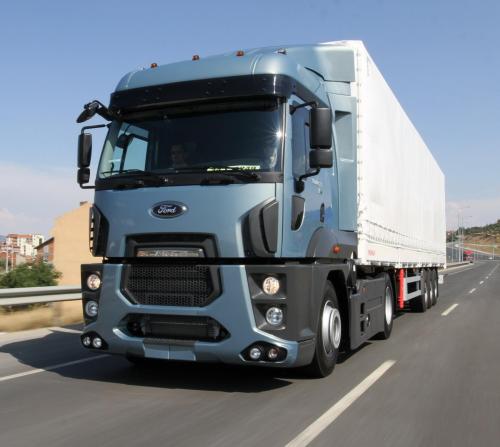
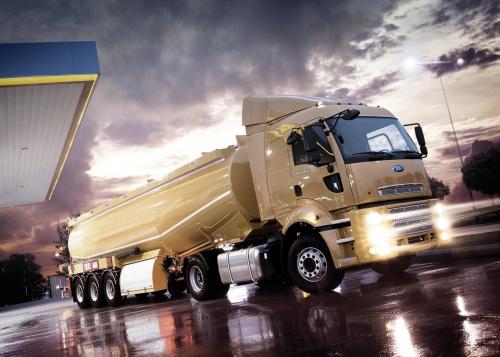
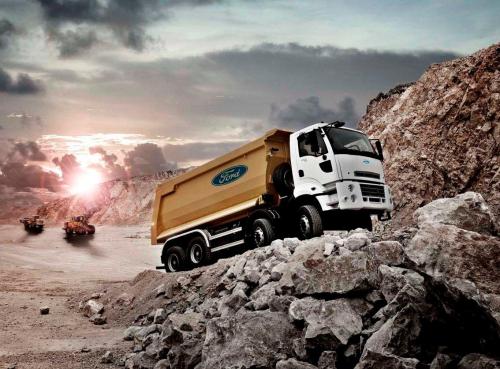
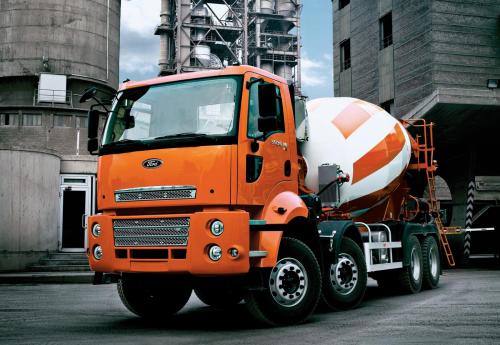
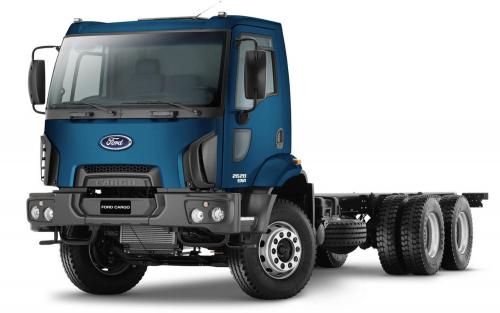
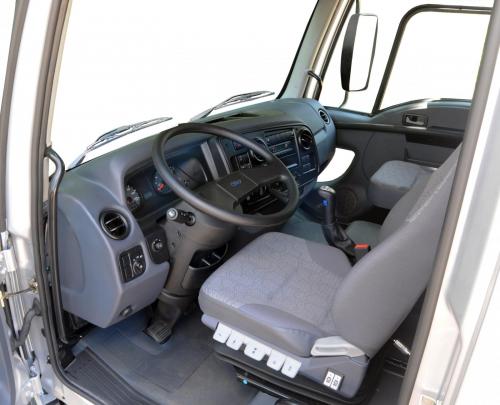
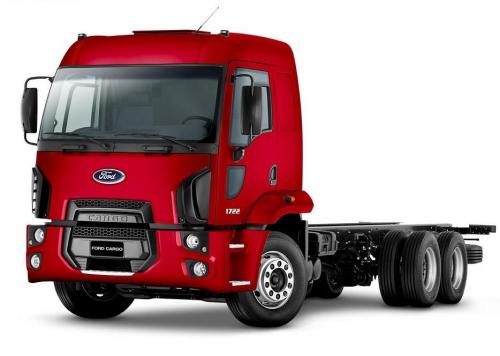
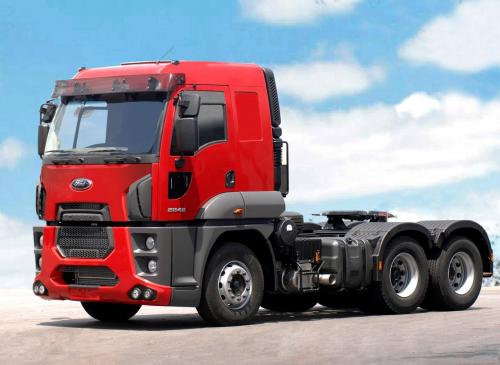
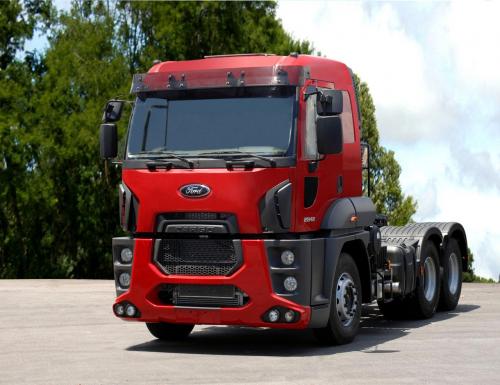
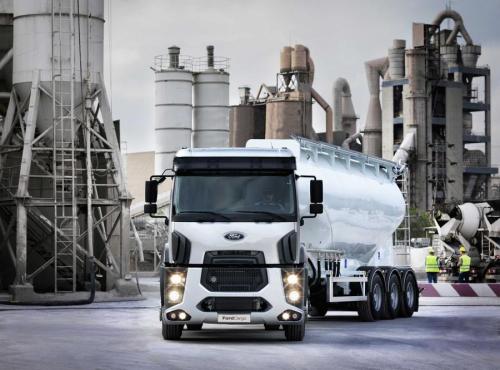
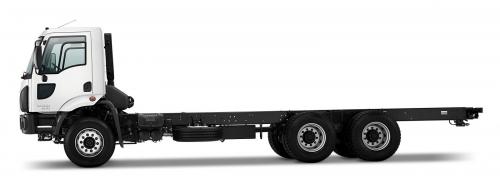
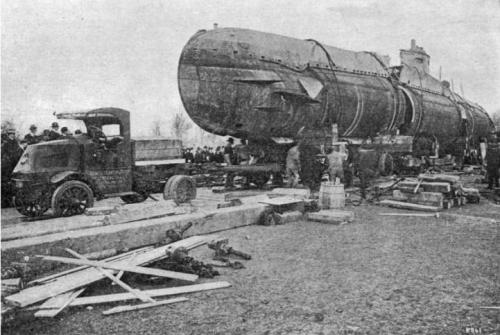
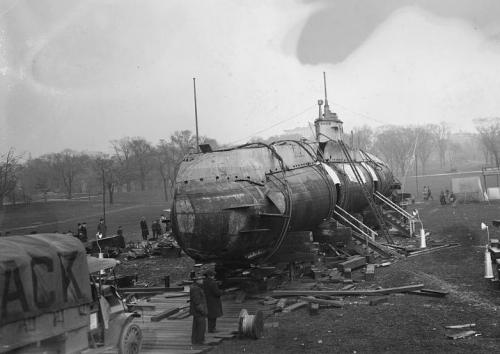
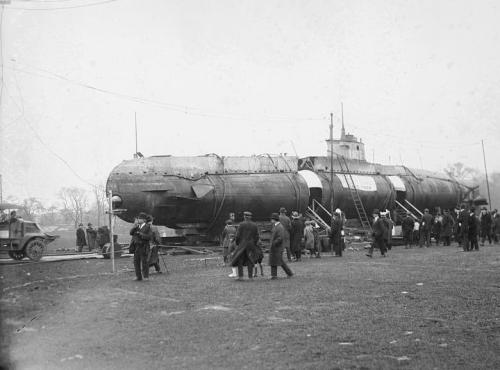
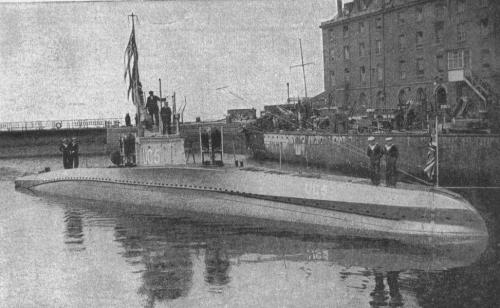
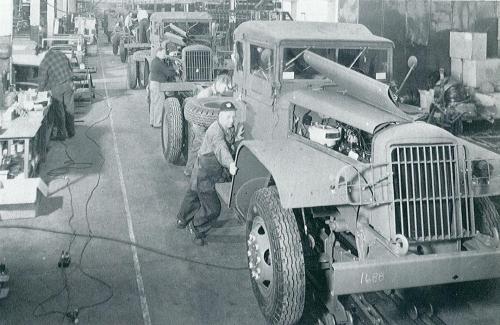
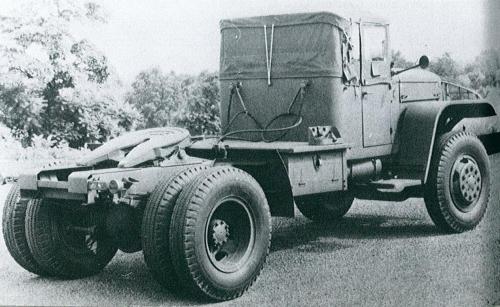
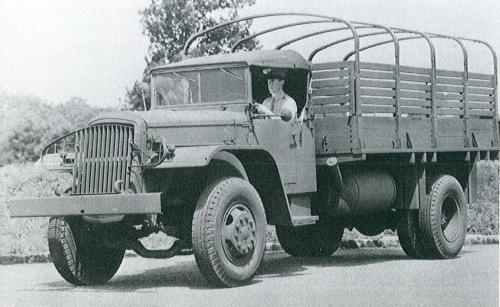
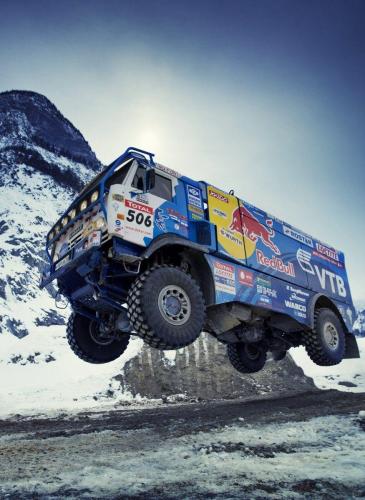
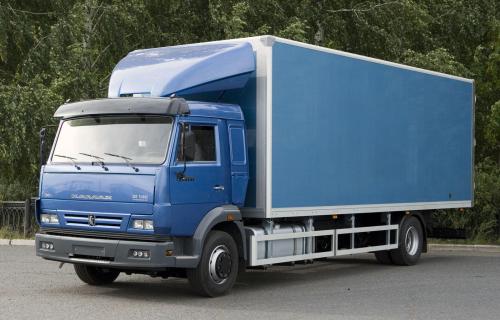
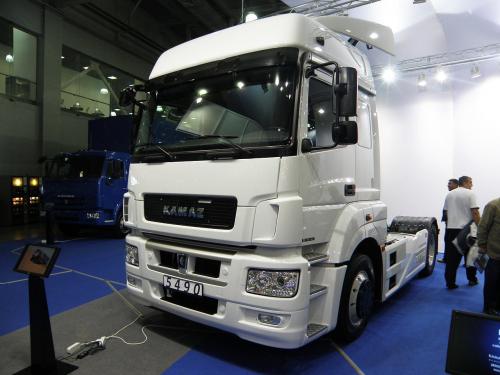
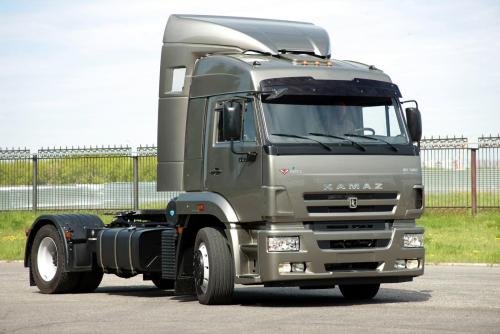
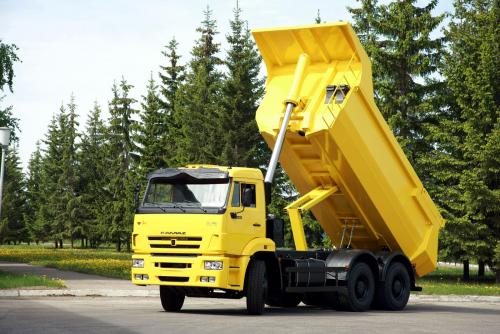
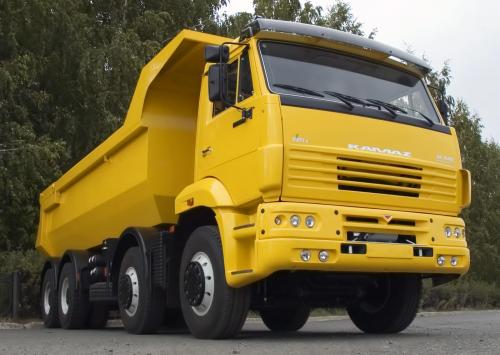
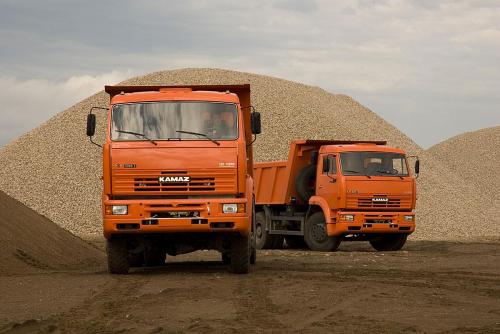
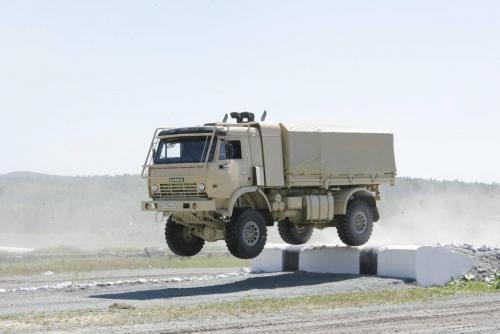
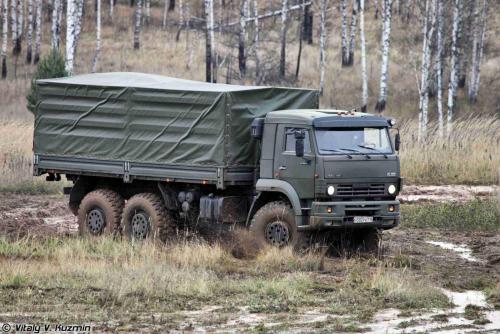
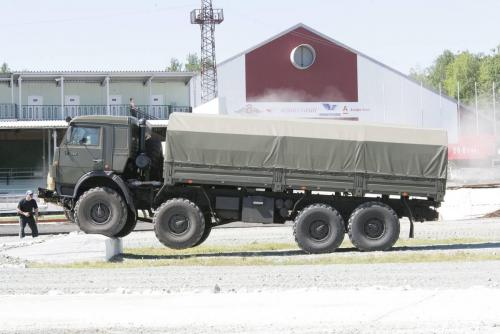
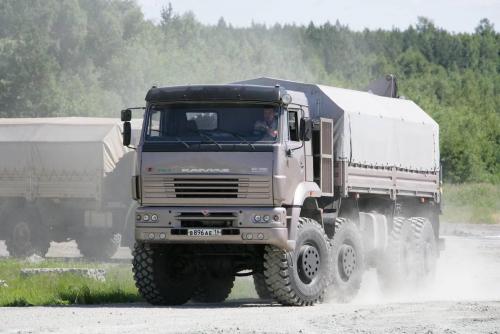
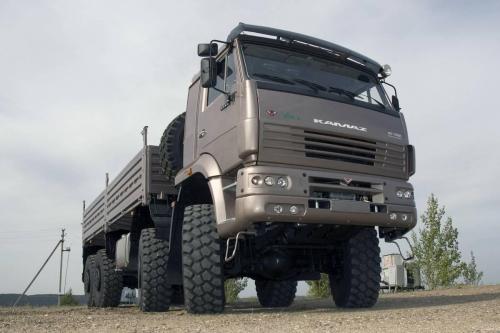
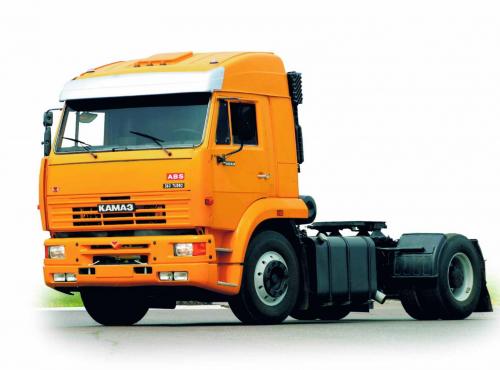
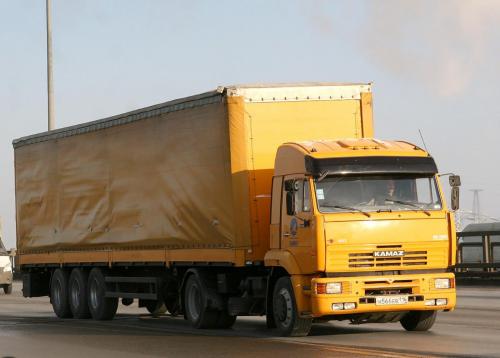

Mack Military Truck ?
in Modern Mack Truck General Discussion
Posted
Certainly a lot of colorful metaphors here.
So far as the Mack-badged Renault Sherpa goes, it is a fine vehicle but our military won't buy it. They'll remain with Oshkosh, Navistar and other American manufacturers.
Volvo did indeed shut down the superior Allentown Mack R&D center and relocate those functions to an inferior Volvo facility in Greensboro, North Carolina.
The comment on this link (below) echoes my thoughts (http://www.todaystrucking.com/article.cfm?intDocID=28723). I couldn't agree more.
It's so unfortunate that the great Mack name will never be the same now that it's no longer headquartered in Allentown, PA. It's also unfortunate that Mack highway trucks are merely Volvo chassis and engine with a "Mack" looking hood and cab. I proudly worked for twenty years at the Mack Engineering Development and Test Center (now a museum) until forced to find new employment, as Volvo broke a promise and relocated all Engineering operations to Greensboro. Another American icon lost to history.
The sad reality is Mack indeed "was" the greatest name in trucks. It certainly isn't today. It's just a brand name belonging to Sweden's Volvo Group. It's no more American now than Mercedes-Benz or Nissan.
The gentleman above is correct in saying the Titan has been a sales failure (ask your Volvo North America Mack-brand regional sales representative). Looking at the big picture, Titans are not selling and most dealers avoid stocking one. While I admittedly prefer the Australian Titan's appearance to the U.S. model, I have to blame the U.S. sales failure on Volvo's Mack brand sales team.
"Macks are still one of the better trucks compared to Pete and KW. They still have a lighter weight and better suspension"
"Have you ever driven a titan mr oldrd6bbst? it'll pull the frame out out from under any kw or pete."
"also i know a company called warren fane trucking in troy ny that just sold 10 2011 kw w900"s that were worthless piles of crap and bought 10 new mack pinnacles"
I realize you both have the best of intentions, but let's put this to rest.
All U.S. trucks can be spec'd light, or heavy. Nearly all suspensions on U.S. market trucks are produced by Hendrickson Suspension. Better suspension? The Hendrickson air suspension on Mack-branded trucks is no better or worse than the rest.
You can spec a Kenworth or Peterbilt comparably to the Titan and get the same results. The severe service Titan does not have any new/advanced/unique superiority over Kenworth and Peterbilt's severe service models.
I can spec any brand truck inappropriately for an application and it will typically deliver poor results over its life.
Net result - disappointed customer
I can spec any brand truck ideally for a specific application and it will deliver superior results over its life.
Net result - happy and profitable customer
Yes, all trucks have their idiosyncrasies. But in the light from which you are speaking, that doesn't apply.
There are small fleets all across America changing truck brands all the time. If we could keep score, it would nearly balance out. For every vocational fleet deciding to leave Kenworth for Mack-branded Volvos (and there aren't many), there's a Mack fleet that's decided to experience Kenworth (which rarely happened when Mack Trucks was in business).
I was on the interstate the other day for 30 minutes. I tallied every tractor trailer. I saw just one Mack-branded Volvo. The rest of the trucks were mostly Freightliners and Internationals. Not my opinion - just the fact.